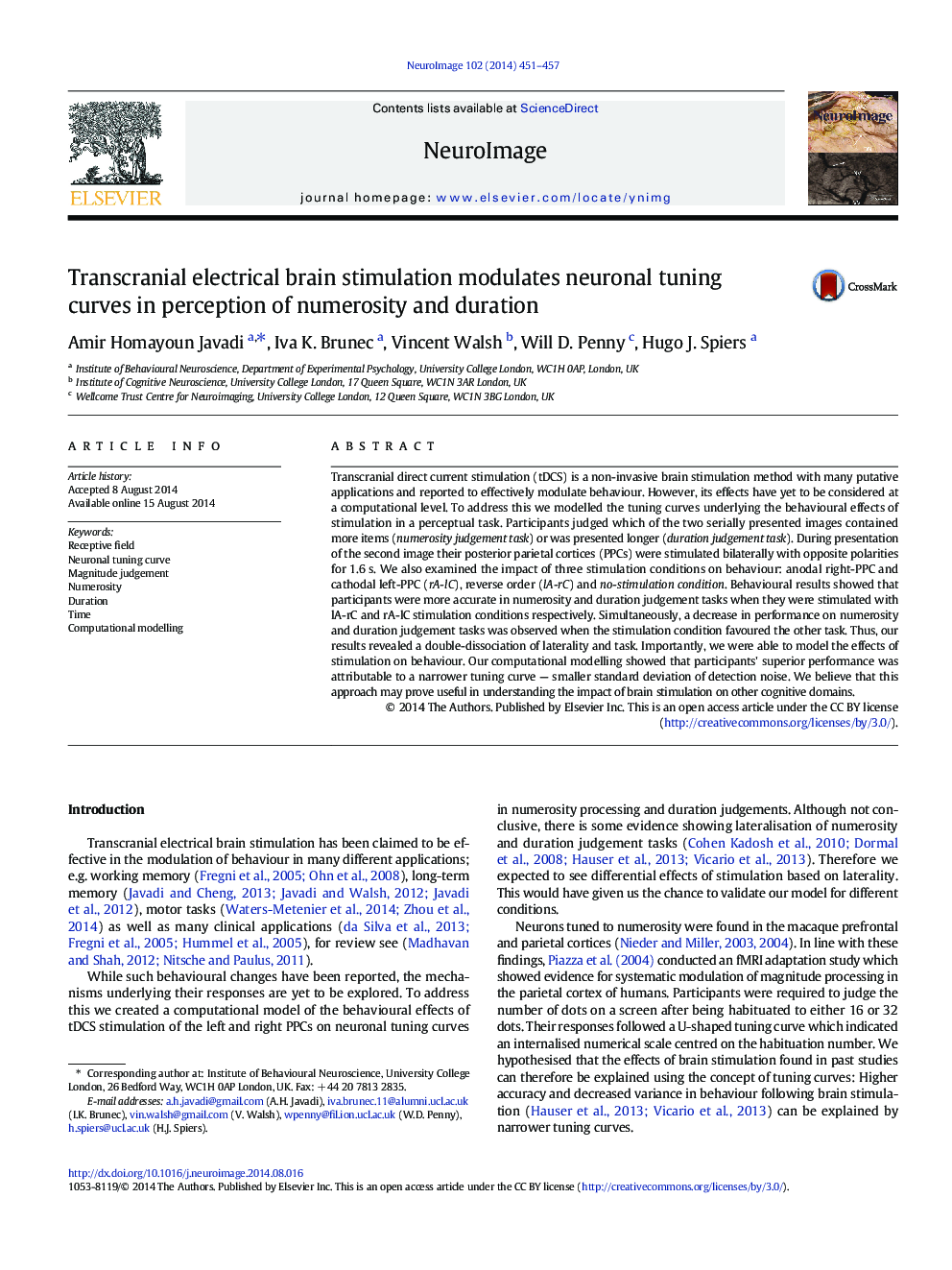| Article ID | Journal | Published Year | Pages | File Type |
|---|---|---|---|---|
| 6026001 | NeuroImage | 2014 | 7 Pages |
Abstract
Transcranial direct current stimulation (tDCS) is a non-invasive brain stimulation method with many putative applications and reported to effectively modulate behaviour. However, its effects have yet to be considered at a computational level. To address this we modelled the tuning curves underlying the behavioural effects of stimulation in a perceptual task. Participants judged which of the two serially presented images contained more items (numerosity judgement task) or was presented longer (duration judgement task). During presentation of the second image their posterior parietal cortices (PPCs) were stimulated bilaterally with opposite polarities for 1.6Â s. We also examined the impact of three stimulation conditions on behaviour: anodal right-PPC and cathodal left-PPC (rA-lC), reverse order (lA-rC) and no-stimulation condition. Behavioural results showed that participants were more accurate in numerosity and duration judgement tasks when they were stimulated with lA-rC and rA-lC stimulation conditions respectively. Simultaneously, a decrease in performance on numerosity and duration judgement tasks was observed when the stimulation condition favoured the other task. Thus, our results revealed a double-dissociation of laterality and task. Importantly, we were able to model the effects of stimulation on behaviour. Our computational modelling showed that participants' superior performance was attributable to a narrower tuning curve - smaller standard deviation of detection noise. We believe that this approach may prove useful in understanding the impact of brain stimulation on other cognitive domains.
Related Topics
Life Sciences
Neuroscience
Cognitive Neuroscience
Authors
Amir Homayoun Javadi, Iva K. Brunec, Vincent Walsh, Will D. Penny, Hugo J. Spiers,
